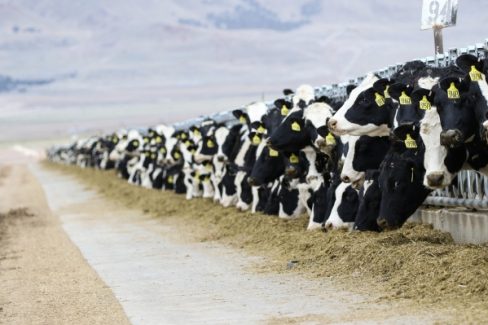 Adopting a heifer synchronization program can pay dividends down the line for dairy producers. The sooner heifers become pregnant, the sooner they can enter the milking string and become productive members of the herd.
Adopting a heifer synchronization program can pay dividends down the line for dairy producers. The sooner heifers become pregnant, the sooner they can enter the milking string and become productive members of the herd.
“Adopting a heifer synch program can also decrease labor costs on the farm,” said Jennifer Roberts, DVM, Boehringer Ingelheim. “It won’t eliminate the need for heat detection, but it will help concentrate artificial inseminations to fewer days, which can be a big timesaver.”
Whether a producer is considering a synch program with 200 heifers or 2,000 heifers, there are some foundational practices that can set a dairy operation up for success:
No. 1: Keep heifer synch programs simple
Heifers are going to be the most fertile animals in your herd, so a longer and more complicated protocol usually isn’t necessary. Heifers typically show signs of heat with one or two injections of prostaglandin.
“Within a three-week period using a two-dose prostaglandin protocol, you’re likely to have about 85% of your heifers inseminated,” explained Dr. Roberts. “Following a single dose of prostaglandin in a group of heifers, about 55 to 60% of them will show signs of heat within 2 to 5 days. Then, in about 10 to 14 days, you can give those that didn’t get bred the first time another round of prostaglandin, thus getting a large group of heifers bred within a relatively short amount of time.”
No. 2: Leverage a strong team
“A heifer synch program is a team effort on the farm,” said Dr. Roberts. “It involves the producer, who must establish goals and care for the animals. It involves a nutritionist, who ensures the heifer diet is balanced for optimal growth and development. And it involves a veterinarian, to ensure the heifers are healthy.”
Any employees who are part of the program should be well trained. The closer they can follow a synchronization protocol, the more success a program is going to see.
No. 3: Establish a clear set of goals
“Before setting up a program, producers should consider what their goals are,” Dr. Roberts advised. “If your goal is for heifers to calve around 22 to 24 months, those animals need to have regular estrous cycles at or before 12 months of age.
“Getting heifers to this point means they have good body condition,” Dr. Roberts continued. “You want heifers fed well, since you’ll be breeding them somewhere around 55 to 60% of their mature body weight.”
No. 4: Use well-researched products
Just like there are differences between antibiotics and vaccines, there are differences between hormones. Work with your veterinarian to find products that will work best for your farm and read the instructions on the product labels carefully.
No. 5: Implement a diligent monitoring system
“Be intentional about reviewing your program,” emphasized Dr. Roberts. “A good place to start is having regular discussions with your team. That’s when you’re going to catch something that you’re not seeing week to week or pregnancy check to pregnancy check.” It’s also a time to hear recommendations from others on how to improve.
“There’s no cookie-cutter heifer synchronization protocol out there,” Dr. Roberts summarized. “Each one is very tailored to fit the needs and management style of the farm. Working closely with the veterinarian, herd manager and nutritionist will ensure that goals and expectations are aligned with what is best for the herd.”
Provided by Boehringer Ingelheim Animal Health




